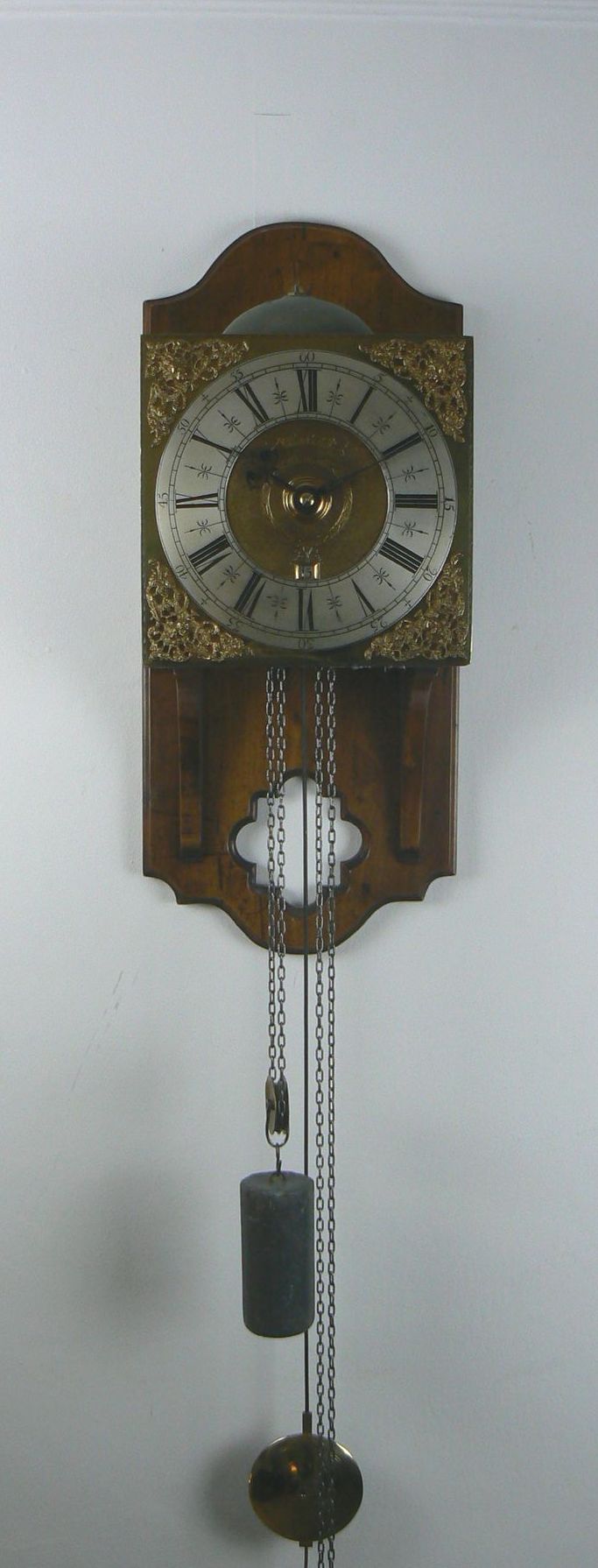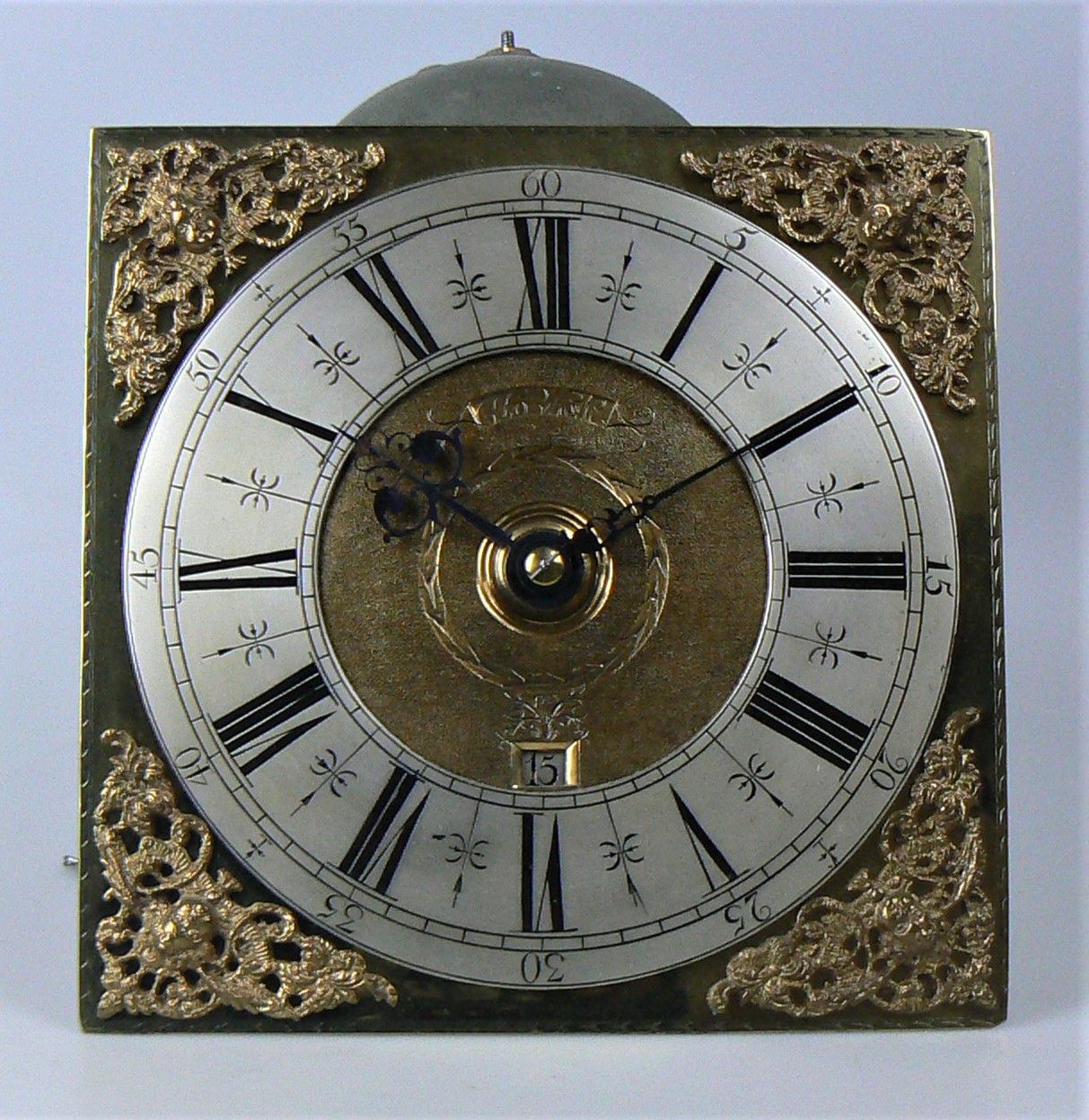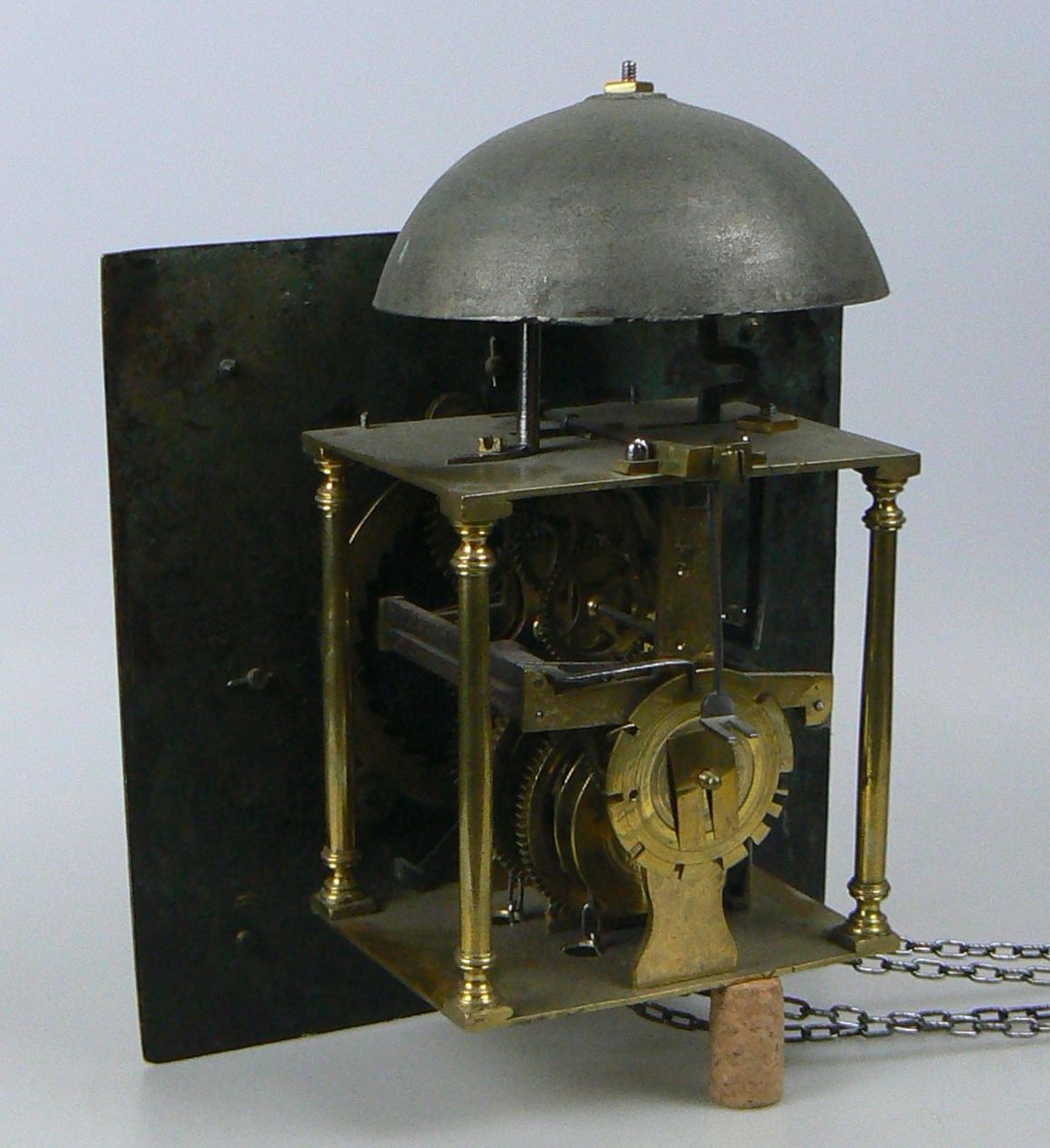Thomas Wroth - Wellington
THOMAS WROTH OF WELLINGTON (SOMERSET)
Circa 1690
Status: Sold
Museum-quality early 30-hour lantern posted movement with original dial and hands.
The time is displayed via the original blued steel hands to the brass dial with raised silvered chapter ring with Roman hour numerals. Unusual half hour markers are present with conventional five minute numbering to the outer of the chapter ring. The matted dial centre carries the signature "Tho Wroth" in a stylised banner beneath the number 12. There is attractive wheatear engraving around the centre of the dial and also a date aperture above the number 6. The four corners carry cherub spandrels and the dial edge is finished with wheatear engraving, echoing that in the dial centre.
The original brass birdcage movement is chain driven with four beautifully turned pillars as used in lantern clocks of the period. Countwheel striking sounds the hours on a single bell.
Rare on so many levels - this is a very early work, quite possibly the earliest Somerset clock made for domestic use that I have seen, dating from circa 1690. The similarities to lantern clocks of the period can be clearly seen in the wheelwork and brass corner posts. We have now mounted the movement on a cherrywood bracket to best appreciate this 320-year-old horological work of art.
About The Maker:
Thomas Wroth
came to Wellington
towards the end of the 17th century having learned the art of bellfounding from Hodson of White Chapel, London. He is said to have assisted Hodson in casting the bell of "Great Tom" in Oxford in 1681. In Somerset, there are bells by him dated 1694 and 1701.
He is recorded making a number of church clocks including Wellington (1699). Several parish registers record him working from 1686 including West Buckland (1686 & 1687). To our knowledge only one other lantern clock and 30-hour movement have been recorded.
Bibl:
Somerset Clockmakers, JK Bellchambers
The Clockmakers of Somerset 1650 - 1900, AJ Moore



All our grandfather clocks have been sympathetically restored to the highest standards by our small team of specialist craftsmen and skilled artisans.
They are offered for sale clearly priced, delivered and installed in your home with a full guarantee as to their authenticity and good working order.
Follow Us
International Telephone Enquiries: *44 1 404 371 265 From UK 01404 371265
Email: info@davidgibson.co.uk
BIBLIOGRAPHY
--- BRACKET CLOCKS
--- WATCHES
--- GLOSSARY
--- MOONPHASE
--- HISTORICAL DATES
--- CLOCK NEWS
--- SITEMAP
© David Gibson 2024 All Rights Reserved
